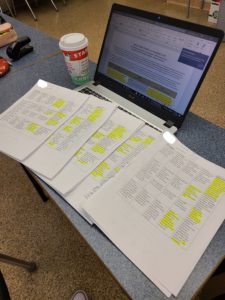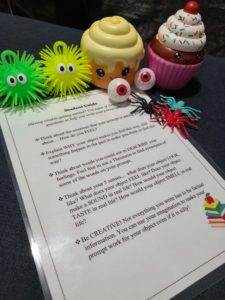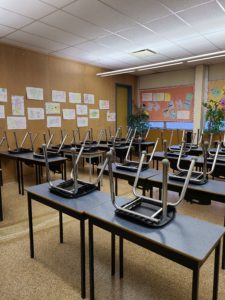~Educators implement effective planning, instruction, assessment and reporting practices to create respectful, inclusive environments for student learning and development~

I believe assessment is one of the areas that I have grown the most in as an educator during this practicum. Because of the structure of quarter systems in high schools, I had the opportunity to work with two different groups and two different grades. This gave me the chance to implement two separate summative assessments, multiple formative assessments, and even a pre-assessment for the new group of students coming in for the second quarter. I created two different final assignments, one for each group, which were extremely adaptable, flexible, and inclusive to support student learning and development. The first final assignment (bias, perspective, and opinion in media) included four different options for students. There was the option of creating 3 “Instagram posts” using a blank template to express bias, there was an option of using a blank Twitter template to create three “Twitter posts”, there was an option to gather five fake new headlines and analyze them, and there was an option to create a unrealistic advertisement. Each option had a visual and written explanatory aspect to it. I also created a rubric for each part of the assignment. Although this final assignment went well, overall, I felt I needed to be more direct, specific, and detailed in both the criteria and rubric. I also felt that there may have been too many options (which created more work for me) because the entire class of students either chose the Instagram or Twitter option. For my next final assignment (myths, legends, fables, and fairytales), I created a final assignment that was still inclusive and flexible but adapted it to be more cohesive and concise. For the final assignment, the students could choose to write either a myth, legend, fairytale, and fable (which ever they were most interested in and understood the best over the unit), but had to include the same aspects. They had to include the story vocab learned over the unit (protagonist, antagonist, conflict, theme, etc.), parts of a plot (introduction, rising action, climax, etc.), one mythical creature, and one drawing to incorporate the idea of visual story. So, although in this assignment students had to include all the same elements, they could include them in a unique way that worked for them. This made it easier for myself and the students to understand the concept of the final assignment. I also worked on making sure there were many specific, explicit details in both the criteria and the rubric so marking would be easier for me, and meeting expectations would be easier for the students. Marking these assignments was much easier, quicker, and consistent.

I believe that one of my strengths this practicum was my organization and my planning. I constantly had everything prepared for class before the students entered the room. I always had printing and supplies prepared the day before and I think this contributed to a relaxing and successful classroom environment. I never felt stressed, overwhelmed, or underprepared entering the classroom because I had always done a great amount of preparation. This is important as students can easily pick up on how you are feeling. One of my other strengths was timing. I almost always executed my lessons down to the minute how I had planned them without rushing or trying to fill time. The times that perhaps activities were done sooner, I always had back up plans/activities that I was able to implement seamlessly. For the few times that activities went over the time planned, I was also able to easily move them to the next day without disrupting our overall unit plan. This is something I am very proud of as I feel it truly contributed to my success.
